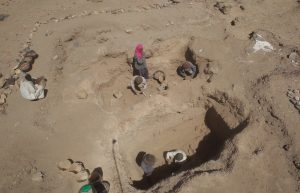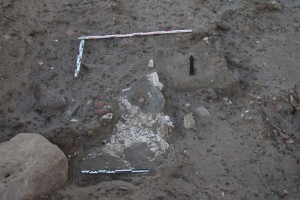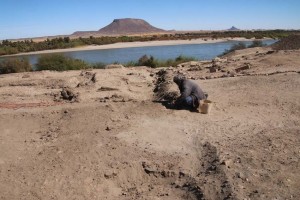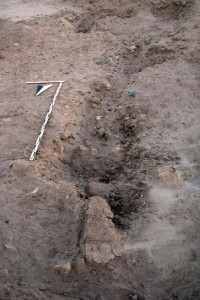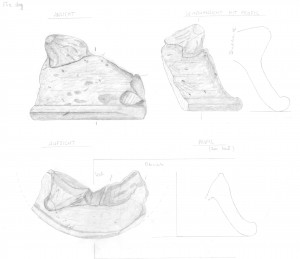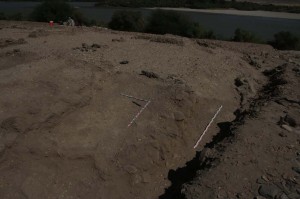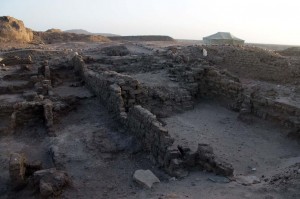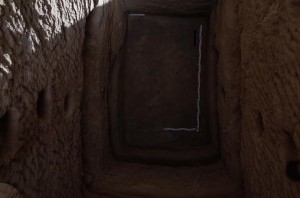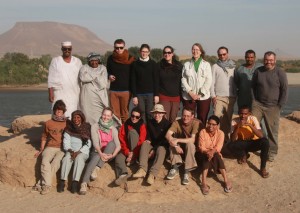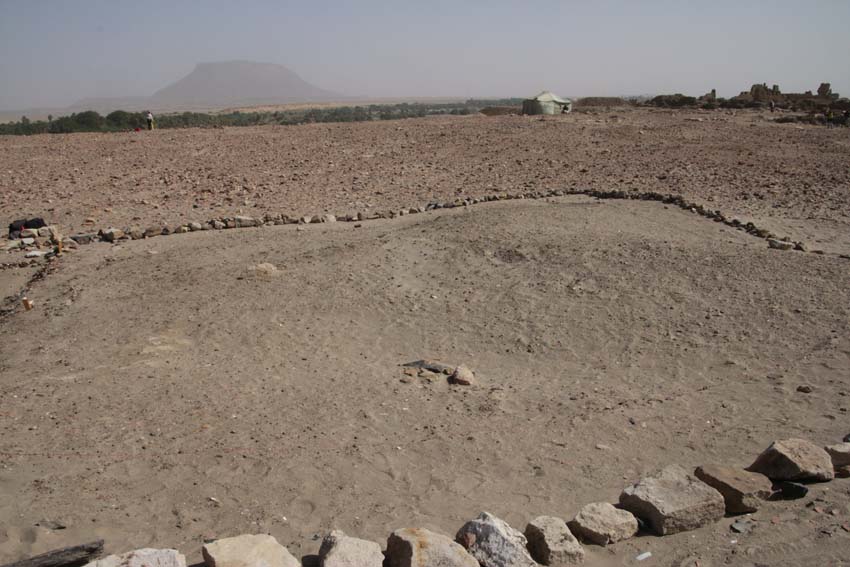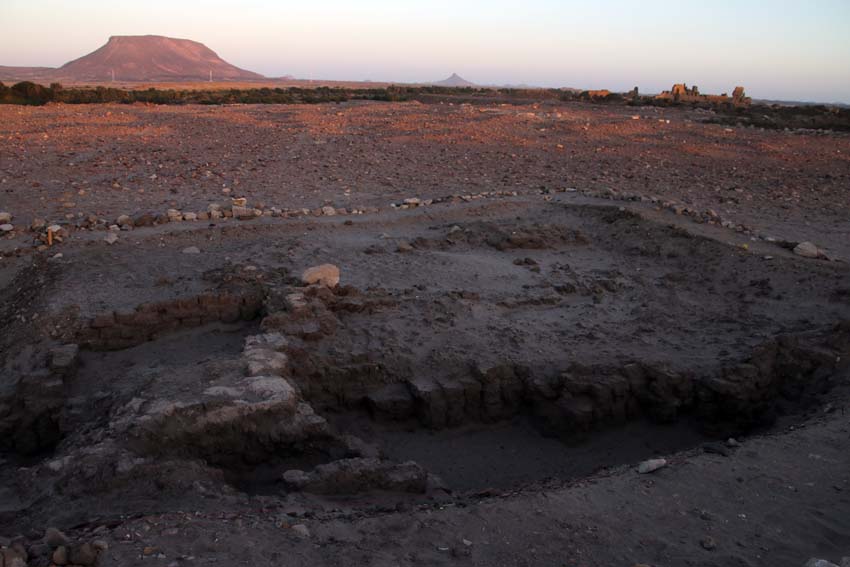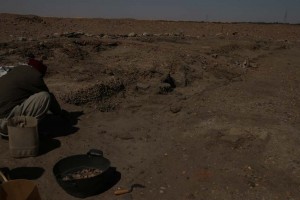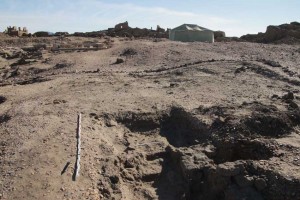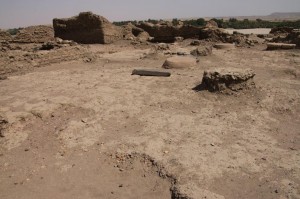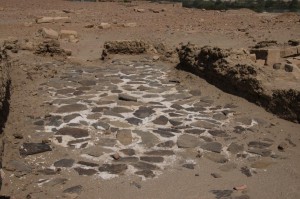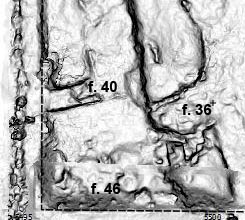After very intense last days – with severe attacks by nimiti-flies from 6:45 am onwards – and a total of 10 successful weeks, we finished fieldwork on Friday and returned back to Khartoum yesterday. Most of the team has left already this morning; Cajetan and me stay two more days to arrange our export samples and other things.
To be very honest: I am still too tired to write up a proper summary of this simply amazing season! I am also too impressed by all of the finds from the last days – the big cellars we excavated in square 4D at SAV1 East were better preserved than originally thought. Their discovery itself did not come as a surprise – thanks to Martin Fera and his close look on the map of the geophysical survey back in 2011, we were expecting something similar like feature 15.
Feature 83, the southern cellar, was exposed first, because it was disturbed by a later pit in its central and western part. The pavement in the eastern part was still preserved and yielded some nice in situ finds of pottery and animal bones.
Feature 85, situated in the north, however, was much better preserved: at least it was not disturbed by pits from above. Part of its vault is still in place, only its side walls have collapsed and covered the lower part of the cellar. A really amazing find, very unexpected for SAV1 East in general – and very challenging for the very last week of a fieldwork project!
Both new cellars are similar in date and belong to the major Thutmoside building phase at SAV1 East – contemporaneous to Building A. They add important data to the general layout of the town and the functional interpretation of SAV1 East.
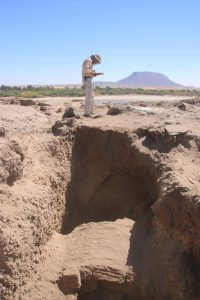
For now a big “thank you” to all the brave workmen and the staff working at SAV1 East – including the “magazine guys” who helped us finishing on the very last day, despite of the black flies attacks! When even the workman who never never never wears a mosquito net does ask for one and then does not take it off for one second, you really know that these last weeks were like hell – but with much reward regarding the archaeology of New Kingdom Sai!

